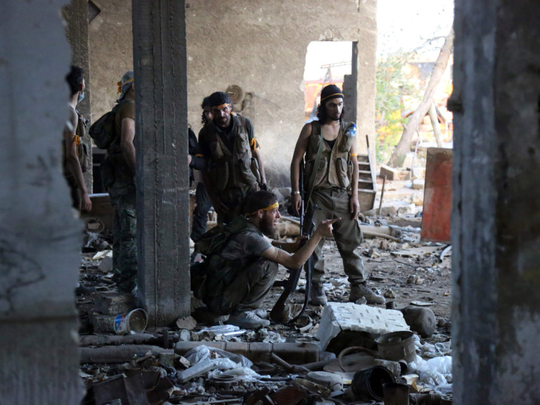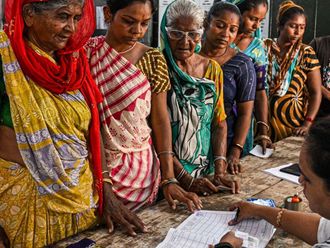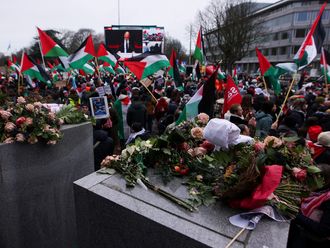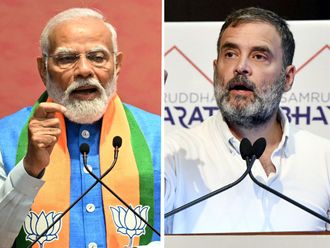
Five years after the outbreak of the Syrian crisis, resulting so far in the death of more than 300,000 people, the displacement of 12 million citizens and the destruction of more than 50 per cent of the country’s cities, towns and villages, the prospects for a political solution look shabby at best. The battle for Aleppo, which the regime was hoping to conclude in a matter of days, has underlined the changing realities that now characterise the Syrian crisis.
The war in Syria is no longer between Syrians themselves or over what the Syrian people want. The goals and objectives of the popular uprising that erupted in 2011 have long been set aside. Moderate rebel groups — secular and democratic in nature — are fragmented and carry little military sway. Instead, we have a growing coalition of mostly Sunni Salafist groups, with an unknown number of foreign fighters, fighting against Shiite factions that had come from Lebanon, Iraq, Iran, Afghanistan and others and who report directly to Tehran. The regular Syrian army is now undermined, demoralised and exhausted. It is no longer in the forefront of the fighting.
Russia’s military intervention last September has prolonged the war and saved the regime of President Bashar Al Assad, but it has failed to deliver a conclusive military victory for Al Assad. The United States-led coalition is focusing its attention on Daesh (the self-proclaimed Islamic State of Iraq and the Levant) positions in Syria and is only now recognising the rising threat of groups like Jabhat Al Nusra and its radical allies.
What we now have in Syria is a proxy war that is sectarian in nature; a war that has nothing to do with the Syrian people and their aspirations. It is a war that is being fought on many fronts, involving many sides, with regional and international players following their own agendas. For now, Aleppo is the main battlefield, but there are other war-fronts extending from the suburbs of Damascus to the wilderness of the eastern desert and from Idlib in the north to Raqqa in the northeast.
Success of rebel forces
One outcome from last week’s events in Aleppo was the emergence of a new alliance between Sunni groups, who have taken the military initiative. The alliance is mainly made up from the Jabhat Fatah Al Sham group — which was formerly the Al Qaida-linked Jabhat Al Nusra — and Ahrar Al Sham militants. These are Salafist groups whose main objective is to bring down the Al Assad regime and set up an Islamic state in Syria. Their ideological differences are superficial.
The success of rebel forces in breaching the government siege in the eastern parts of Aleppo has startled the Damascus regime and its key allies — primarily, the pro-Iran Hezbollah fighters and Russia’s military command.
But the battle is not over yet and the regime has now summoned reinforcements from Homs, Hama, Damascus and other areas. In addition, elite Hezbollah fighters, known as Al Radwan, have been dispatched to Aleppo, where they will join at least 2,000 “volunteers” who had come from Iraq. Iran is also sending “advisers” to help the regime plan a new offensive.
Jabhat Fatah Al Sham and dozens of smaller Islamist rebel groups maybe led by Syrian nationals, but many of their fighters are foreigners. Fighting on the government side are people from many different nationalities and as the regular army suffers, the regime will rely increasingly on foreign fighters.
A recent study published by the Center for German Studies, ‘Firil’, revealed that “foreign fighters, of all nationalities, who have fought against the Syrian Army from April 2011 and until the end of 2015, numbered 360,000”. It also added that currently, the number of foreign fighters in Syria totals 90,000, most of whom are fighting with Daesh and Fateh Al Sham. The study estimated that foreign fighters represent at least 93 different nationalities, including every single Arab country.
On the other hand, there are no precise figures on the number of Hezbollah fighters active in Syria. They are in the thousands and various sources have confirmed that the Lebanese group had lost at least 1,500 fighters by 2015. The number of Iranian “advisers”, Revolutionary Guard members and other elements keep fluctuating: Some sources say Tehran had sent more than 10,000 combatants since 2012, while others put the number in the hundreds. The most well-known is the Al Quds Legion. There are at least five Iraqi Shiite groups active in Syria on behalf of the regime, including the Abu Al Fadl Al Abas Brigade, the Badr Organisation and Iraqi Hezbollah.
A political solution to the Syrian conflict appears impossible at this stage. The people of Syria have paid a heavy price in the last five years and while a vicious sectarian war is being fought on their land, they can do nothing to stop it. It is a proxy war over Syria where the Syrian people are the main victims.
Osama Al Sharif is a journalist and political commentator based in Amman.













